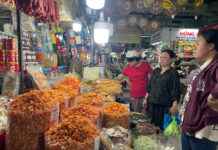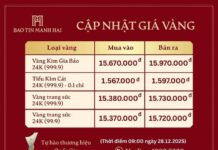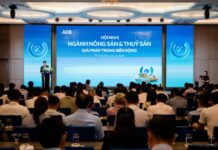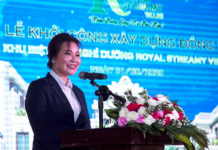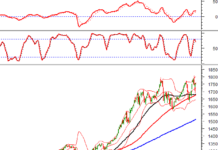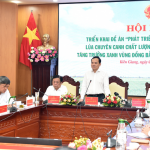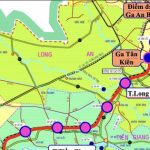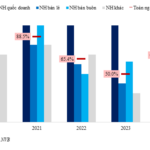Professor Tran Dinh Hoa, Director of the Vietnam Institute of Hydraulic Engineering, made this assertion at a scientific seminar on “Preserving and Restoring Water Resources for the Mekong Delta: Seeking International Technology and Capital.” The seminar was organized by the Vietnam Economic Times in collaboration with the International Investment Consulting Alliance – Invest Global and the Vietnam Association for Nature and Environment Protection on August 30, 2024, in Hanoi.
SALT INTRUSION COMPLICATES AGRICULTURAL PRODUCTION
According to Professor Tran Dinh Hoa, the Mekong Delta is a young delta located in the Mekong River’s lower basin and plays a crucial role in Vietnam’s socioeconomic development.
Formed approximately 6,000 years ago, the Mekong Delta spans an area of nearly 4 million hectares and is currently home to around 20 million people.
Analyzing the region’s water resources, Professor Hoa revealed that the annual flow volume in the entire Mekong Delta is approximately 475 billion cubic meters. Notably, 95% of this water flows from upstream foreign countries into Vietnam. The Mekong Delta accounts for about 56% of Vietnam’s total water resources. This water volume is predominantly concentrated during the rainy season, accounting for 80-85%, while only 15% is available during the dry season. The region boasts an extensive network of canals and channels, totaling about 74,000 kilometers.

In terms of socioeconomic activities, Professor Hoa emphasized that despite its relatively small area, the Mekong Delta contributes 12% to the country’s GDP and significantly impacts the economy, social development, food security, and exports. It is also Vietnam’s largest producer of rice, seafood, and fruit, contributing 56% of the country’s rice production, 95% of rice exports, 65% of aquaculture output, and 60% of fruit production.
“Drought, saltwater intrusion, land subsidence, and water pollution are prevalent in most provinces and cities in the Mekong Delta, and their severity and complexity are increasing, with impacts extending in both scope and intensity.”
Professor Tran Dinh Hoa, Director of the Vietnam Institute of Hydraulic Engineering
The Mekong Delta is home to three distinct ecosystems: freshwater, brackish water with alternating freshwater and saltwater influences, and mangrove ecosystems. These ecosystems are evolving to adapt to the aquatic environment and natural economic ecology.
However, the Mekong Delta currently faces multiple challenges: (i) climate change and sea-level rise; (ii) water exploitation from upstream areas; and (iii) intrinsic regional development. “Due to its youthful nature in terms of geomorphological formation, the Mekong Delta is highly sensitive to these impacts. To develop a comprehensive development strategy for the Mekong Delta, it is essential to thoroughly analyze these factors,” emphasized Professor Hoa.
Discussing climate change and sea-level rise, Professor Hoa highlighted the issue of saltwater intrusion. Since 2012, after the construction of numerous hydropower dams upstream on the Mekong River, saltwater intrusion has become more complex and has penetrated deeper into the mainland. On the Vam Co River, saltwater has intruded as far as 100-130 kilometers. On the Tien and Hau Rivers, saltwater intrusion reaches 55-65 kilometers, and the intrusion occurs 1-1.5 months earlier than before due to various factors. This early intrusion significantly affects the farming schedule of local farmers.
WATER SCARCITY AND LAND SUBSIDENCE INTENSIFY
Regarding water exploitation from upstream areas, Professor Hoa explained that it leads to drought and freshwater scarcity. In the past, people often talked about “living with floods” in the Mekong Delta. However, since 2012, floods have almost disappeared due to the construction of numerous dams and reservoirs upstream on the Mekong River.
“The function of these reservoirs is to store water and regulate floods during the flood season. In theory, during the dry season, the total water volume should increase due to increased hydroelectricity generation and water release from upstream hydropower plants. But in reality, because the timing of water release is unpredictable and subject to various factors, droughts in the Mekong Delta have become more frequent,” said Mr. Hoa.
Currently, the rural population of the Mekong Delta is approximately 14 million, and providing clean water and rural sanitation is challenging. Although the Vietnamese government prioritizes this issue, nearly 80,000 households in the Mekong Delta lack access to water.
Land subsidence and erosion are also significant concerns. Water fluctuations, climate change, sea-level rise, tidal waves, and regional development have led to changes in the water flow to the Mekong Delta, causing severe land subsidence and erosion.
Regarding environmental pollution, Professor Hoa emphasized that it is a pressing and dangerous issue for the region’s sustainability, impacting the Mekong Delta’s ecology. Currently, people live and work along the canal and river system, and their houses are built close to the riverbanks, leading to significant environmental pollution.
The United Nations clearly states: “Water plays a crucial role in economic and social development and has a fundamental function in maintaining the integrity of the natural environment. Water has become the second most strategic resource after human resources. It directly affects the economic and social development of all countries worldwide and determines their sustainable development.”
Professor Tran Dinh Hoa asserted that the Mekong Delta has been, is, and will remain the country’s agricultural hub, boasting unique natural resource advantages for agriculture and a competitive edge over other regions globally.
However, the Mekong Delta faces irreversible severe external impacts. Upstream development on the Mekong River reduces sediment and alters the natural flow regime. Climate change, sea-level rise, extreme weather events, and internal development impacts cause land subsidence, lower the delta, and severely pollute water sources.
“Under these increasing and intensifying influences, the Mekong Delta is being reshaped (compared to its historical state) with new and less favorable basic characteristics. Therefore, preserving and restoring water resources to achieve sustainable development in the Mekong Delta is an urgent issue with economic, political, and social implications, aiming for a prosperous, sustainable, and culturally rich delta,” emphasized Mr. Tran Dinh Hoa.
Vietnam ready to welcome record international visitors
In January of this year, Vietnam welcomed over 1.5 million international visitors, the highest number since the country reopened its tourism in March 2022.
Urgent Momentum on the Construction Site of the Hau River Bridge
In the scorching heat and gusty wind of the southwestern region in the days leading up to the 2024 Lunar New Year, there is a bustling construction site not far from the beach. Over 300 dedicated workers and staff are diligently working on the construction of the Dai Ngai Bridge, which will soon connect the two banks of the Hau River.
Project “Quality High-Yield Rice Cultivation” – The Big Game and the 10 Principles
On the morning of January 5th, in Kiên Giang province, Deputy Prime Minister Trần Lưu Quang presided over a conference to implement the Sustainable Development Project for 1 million hectares of high-quality, low-emission rice cultivation linked to green growth in the Mekong Delta region by 2030.

